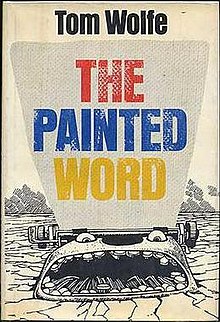Magic realism or magical realism is a style of literary fiction and art. It paints a realistic view of the world while also adding magical elements, often blurring the lines between fantasy and reality. Magic realism often refers to literature in particular, with magical or supernatural phenomena presented in an otherwise real-world or mundane setting, commonly found in novels and dramatic performances. Despite including certain magic elements, it is generally considered to be a different genre from fantasy because magical realism uses a substantial amount of realistic detail and employs magical elements to make a point about reality, while fantasy stories are often separated from reality. Magical realism is often seen as an amalgamation of real and magical elements that produces a more inclusive writing form than either literary realism or fantasy.

Thomas Kennerly Wolfe Jr. was an American author and journalist widely known for his association with New Journalism, a style of news writing and journalism developed in the 1960s and 1970s that incorporated literary techniques. Much of Wolfe's work was satirical and centred on the counterculture of the 1960s and issues related to class, social status, and the lifestyles of the economic and intellectual elites of New York City.

Clement Greenberg, occasionally writing under the pseudonym K. Hardesh, was an American essayist known mainly as an art critic closely associated with American modern art of the mid-20th century and a formalist aesthetician. He is best remembered for his association with the art movement abstract expressionism and the painter Jackson Pollock.

Postmodern art is a body of art movements that sought to contradict some aspects of modernism or some aspects that emerged or developed in its aftermath. In general, movements such as intermedia, installation art, conceptual art and multimedia, particularly involving video are described as postmodern.
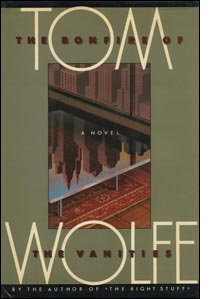
The Bonfire of the Vanities is a 1987 novel by Tom Wolfe. The story is a drama about ambition, racism, social class, politics, and greed in 1980s New York City, and centers on three main characters: WASP bond trader Sherman McCoy, Jewish assistant district attorney Larry Kramer, and British expatriate journalist Peter Fallow.
A review is an evaluation of a publication, product, service, or company or a critical take on current affairs in literature, politics or culture. In addition to a critical evaluation, the review's author may assign the work a rating to indicate its relative merit.
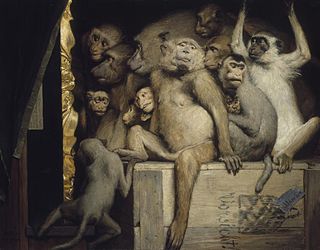
Art criticism is the discussion or evaluation of visual art. Art critics usually criticize art in the context of aesthetics or the theory of beauty. A goal of art criticism is the pursuit of a rational basis for art appreciation but it is questionable whether such criticism can transcend prevailing socio-political circumstances.
Rosalind Epstein Krauss is an American art critic, art theorist and a professor at Columbia University in New York City. Krauss is known for her scholarship in 20th-century painting, sculpture and photography. As a critic and theorist she has published steadily since 1965 in Artforum,Art International and Art in America. She was associate editor of Artforum from 1971 to 1974 and has been editor of October, a journal of contemporary arts criticism and theory that she co-founded in 1976.
Michael Martin Fried is a modernist art critic and art historian. He studied at Princeton University and Harvard University and was a Rhodes Scholar at Merton College, Oxford. He is the J.R. Herbert Boone Professor Emeritus of Humanities and Art History at the Johns Hopkins University, Baltimore, Maryland, United States.
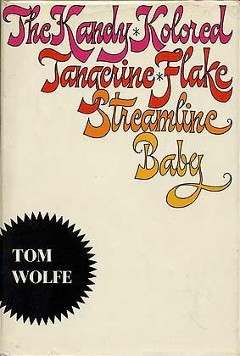
The Kandy-Kolored Tangerine-Flake Streamline Baby is the title of Tom Wolfe's first collected book of essays, published in 1965. The book is named for one of the stories in the collection that was originally published in Esquire magazine in 1963 under the title "There Goes That Kandy-Kolored (Thphhhhhh!) Tangerine-Flake Streamline Baby (Rahghhh!) Around the Bend (Brummmmmmmmmmmmmmm)…" Wolfe's essay for Esquire and this, his first book, are frequently hailed as early examples of New Journalism.
Neil Jenney is an American painter and sculptor born on November 6, 1945, in Torrington, Connecticut, and working in New York City.
In the visual arts, late modernism encompasses the overall production of most recent art made between the aftermath of World War II and the early years of the 21st century. The terminology often points to similarities between late modernism and post-modernism although there are differences. The predominant term for art produced since the 1950s is contemporary art. Not all art labelled as contemporary art is modernist or post-modern, and the broader term encompasses both artists who continue to work in modern and late modernist traditions, as well as artists who reject modernism for post-modernism or other reasons. Arthur Danto argues explicitly in After the End of Art that contemporaneity was the broader term, and that postmodern objects represent a subsector of the contemporary movement which replaced modernity and modernism, while other notable critics: Hilton Kramer, Robert C. Morgan, Kirk Varnedoe, Jean-François Lyotard and others have argued that postmodern objects are at best relative to modernist works.
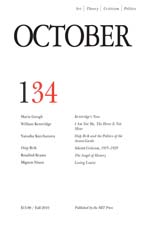
October is an academic journal specializing in contemporary art, criticism, and theory, published by MIT Press.

From Bauhaus to Our House is a 1981 narrative of Modern architecture, written by Tom Wolfe.
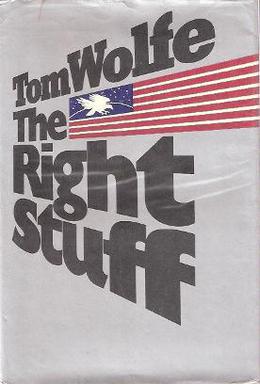
The Right Stuff is a 1979 book by Tom Wolfe about the pilots engaged in U.S. postwar research with experimental rocket-powered, high-speed aircraft as well as documenting the stories of the first astronauts selected for the NASA's Project Mercury program. The Right Stuff is based on extensive research by Wolfe, who interviewed test pilots, the astronauts and their wives, among others. The story contrasts the Mercury Seven and their families with other test pilots such as Chuck Yeager, who was never selected as an astronaut.
Perry Meisel, Professor of English at New York University for over forty years until his retirement in 2016, has written on literature, music, psychoanalysis, theory, and culture since the 1970s. His articles have appeared in The Village Voice, The New York Times Book Review, Partisan Review, October, The Nation, The Atlantic, and many other publications. His books include The Myth of Popular Culture from Dante to Dylan, The Literary Freud, The Cowboy and the Dandy, The Myth of the Modern, The Absent Father, and Thomas Hardy: The Return of the Repressed. He is co-editor, with Haun Saussy, of Ferdinand de Saussure's Course in General Linguistics, and co-editor, with Walter Kendrick, of Bloomsbury/Freud: The Letters of James and Alix Strachey, 1924–25. He is also editor of Freud: A Collection of Critical Essays. He received his B.A., M. Phil, and Ph.D. from Yale.

Peter Plagens is an American artist, art critic, and novelist based in New York City. He is most widely known for his longstanding contributions to Artforum and Newsweek, and for what critics have called a remarkably consistent, five-decade-long body of abstract formalist painting. Plagens has written three books on art, Bruce Nauman: The True Artist (2014), Moonlight Blues: An Artist's Art Criticism (1986) and Sunshine Muse: Modern Art on the West Coast, 1945-70 (1974), and two novels, The Art Critic (2008) and Time for Robo (1999). He has been awarded major fellowships for both his painting and his writing. Plagens's work has been featured in surveys at the Museum of Modern Art, Los Angeles County Museum of Art (LACMA), Whitney Museum, and PS1, and in solo exhibitions at the Hirshhorn Museum and Las Vegas Art Museum. In 2004, the USC Fisher Gallery organized and held a 30-year traveling retrospective of his work. Critics have contrasted the purely visual dialogue his art creates—often generating more questions than answers—with the directness of his writing; they also contend that the visibility of his bylines as a critic has sometimes overshadowed his artmaking—unduly. Los Angeles Times critic David Pagel described Plagens's painting as a "fusion of high-flying refinement and everyday awkwardness" with an intellectual savvy, disdain for snobbery and ungainliness he likened to Willem de Kooning's work. Reviewing Plagens's 2018 exhibition, New York Times critic Roberta Smith called the show an "eye-teasing sandwich of contrasting formalist strategies," the hard-won result of a decade of focused experimentation.
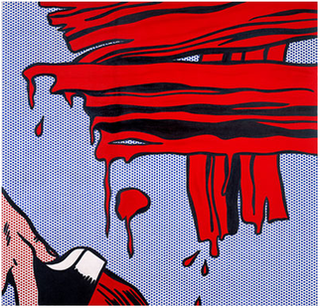
Brushstrokes series is the name for a series of paintings produced in 1965-1966 by Roy Lichtenstein. It also refers to derivative sculptural representations of these paintings that were first made in the 1980s. In the series, the theme is art as a subject, but rather than reproduce masterpieces as he had starting in 1962, Lichtenstein depicted the gestural expressions of the painting brushstroke itself. The works in this series are linked to those produced by artists who use the gestural painting style of abstract expressionism made famous by Jackson Pollock, but differ from them due to their mechanically produced appearance. The series is considered a satire or parody of gestural painting by both Lichtenstein and his critics. After 1966, Lichtenstein incorporated this series into later motifs and themes of his work.
James Pringle Cook is an American painter based in Tucson, Arizona, known nationally for expressive, monumental landscapes and urban scenes that employ vigorous brushwork and thick, impasto surfaces and move between realism and passages of abstraction. He has explored a wide range of geographies across the United States and subjects from craggy mountains and seascapes to industrial accidents to the figure. Curators and critics, however, generally agree that his work is as much about pure painting as it is about his convincing recapitulations of the world and a sense of place. Museum Director Robert Yassin described Cook as "a painter who is in love with painting [whose] bravura use of paint is akin to the abstract expressionists; unlike them, however, he provides viewers with a recognizable reality, ordered by his own personal vision and controlled by his technical mastery." Discussing his urban works, Margaret Regan wrote, "Cook is so skilled a painter he can turn almost anything into a thing of beauty […] His bravura handling of the paint is what matters: his pure layers of color, slabbed in thick gobs onto his linen canvases with a palette knife, glistening like butter."

Jaleh Mansoor is an Iranian-born Canadian art historian, critic, and theorist of modern and contemporary art. She is an associate professor in the faculty of Art History, Visual Art and Theory at the University of British Columbia.
